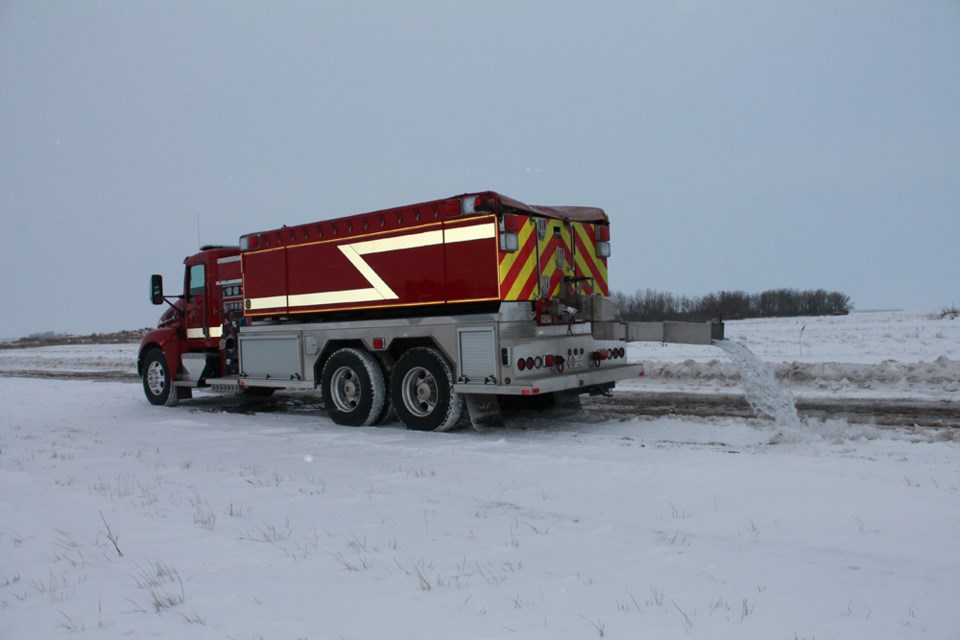Winter driving skills are not covered in Saskatchwan drivers training.
That is a big reason why Saskatchewan Safety Council and Discovery Ford have partnered up to bring their Skidsmart Collision Avoidance program to Humboldt for its second year.
It is time well spent, says Instructor Lee Carlson.
“A little bit spent up front can save a whole lot of cost later on. I’m not talking about cost of vehicles, I’m talking about the human cost. That is something we cannot put a cost on.”
Statistically, more collisions occur during the winter months, says Carlson. Snowy and icy road conditions accounted for 42 per cent of collisions in 2013 and were the cause of 15 fatalities according to statistics from SGI.
“They’re far more frequent in the winter months because of the adverse conditions that we’re faced with.” Says Carlson.
This is one problem during driving in winter. People overestimate their ability and underestimate driving conditions, says Carlson.
“Sometimes we get complacent and then we get into trouble.”
The course is two parts, classroom discussion and practical application out on an ice pad beside the Co-op grocery store.
All the theory the participants learn gets put into practice in the afternoon.
“The nine exercises that we do on the skid pad can happen out on the street.” Says Carlson.
There is a difference between driving experience and driving skill, says Mary Jane Gagnon with Discovery Ford.
“The two are not the same.”
Learning these skills, especially in Saskatchewan, is very beneficial since we either drive in the winter or do not drive at all, says Gagnon.
Before taking the course, Gagnon said that she was given plenty of good advice about what to do when in a skid but when she was actually confronted with the situation, she was not putting that advice into practice.
“It wasn’t until I had some professionals coaching me on an ice pad and I could do it (multiple) times and realize what a difference a couple of little changes made.”
When people get into a skid, they tend to panic and brake while they skid, says Carlson. One of the most important pieces of advice that Gagnon received during the course was to steer first and then brake.
“I have always braked and then steered. That’s too late. The steering has to come first.”
Gagnon learned that slowing to a reasonable speed before maneuvering is too late to get yourself out of any kind of trouble.
“You don’t know when it’s going to become life or death.”
Gagnon recalls getting into a situation that could have ended in disaster for herself and her husband.
Driving on a mountain road with multiple curves, both of them were preoccupied in a discussion and missed the curves ahead sign.
It was not until they were approaching the curves that they realized they were going too fast for road conditions.
Her husband is an experienced driver but under those conditions at that speed, there was little he could do to avoid skidding.
“I remember the guardrail and I remember thinking is the guardrail going to hold us?”
They managed not to hit the guardrail and managed to stop six inches away from it.
The situation could have ended quite differently for Gagnon and her husband.
Even in Saskatchewan, drivers can get into situations like this.
Mike Stackhouse experienced this first hand on the way back to the course from lunch.
He took the course last year and got rearended on his way back to Discovery Ford by someone who had gone into a skid.
“I went back after lunch and said, ‘how many people actually get into an accident in the middle of your course?’” He laughed.
Stackhouse said he walked away from the course a better driver, a beneficial thing when he clocks 40,000 kilometres a year on Saskatchewan roads.
Not only was he learning things that he could use in a dangerous driving situation but he was also learning what his vehicle could handle.
He advises companies with employee drivers to pay for their employees to take the course.
“As a business owner, if you have a fleet of vehicles, you might want to better equip the drivers of those vehicles.” Says Stackhouse.
Rick Schwartz with the Saskatchewan Safety Council says that this would also be a good course for young drivers to take.
“They haven’t experience those types of conditions yet.”
Courses will take place Jan. 12-16 and Jan. 19-22 at Discovery Ford, with in class discussion in the morning and practical application in the afternoon.
Registration forms are available online at www.sasksafety.org/training/traffic/skidsmart-collision-avoidance or call Gagnon at 306-682-2652 for more information or registration.
NOTE: The Saturday course had to be cancelled.




